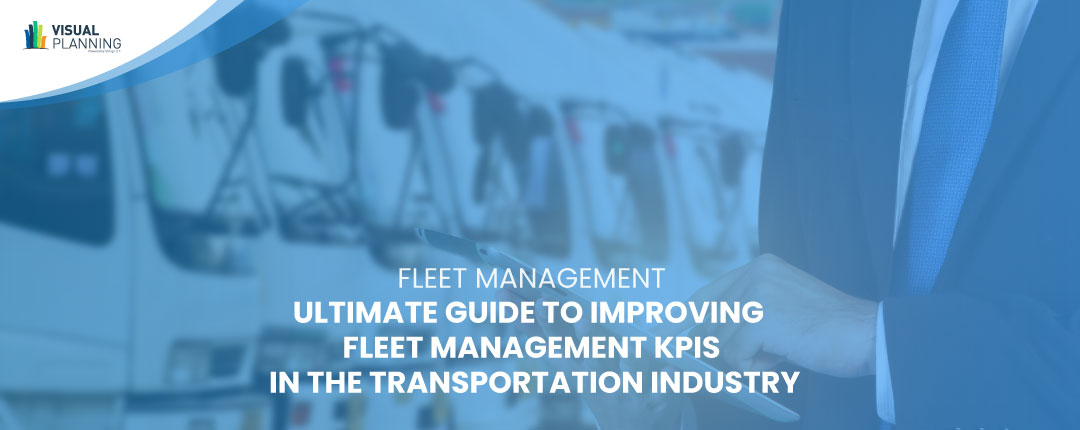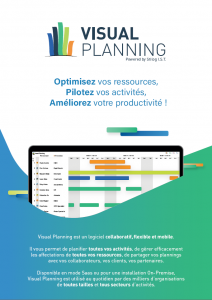To get the most out of your fleet, it’s important to understand and improve fleet management KPIs. Find out more about these critical metrics below, including what fleet data you should track and the benefits of doing so.
What Is Fleet Management?

Fleet management is an umbrella term that covers all the activities and systems a business uses to oversee fleet operations. For transportation companies, some activities that fall under the fleet management umbrella can include, but aren’t limited to:
- Maintaining vehicles. Fleet managers and their teams may need to ensure vehicles receive timely inspections and undergo routine maintenance, including oil, fluid and tire changes. They must also have systems in place so drivers can report issues with vehicles and necessary repairs can occur.
- Assigning drivers and routes. Your fleet is more than vehicles, though; you also have to oversee drivers. That can include assigning routes and schedules to ensure items are delivered on schedule without putting undue hardship on your teams — or pushing drivers past legal log limits.
- Training drivers. Even if you hire trained drivers with the right CDLs, ongoing training can be important. Annual compliance and safety training as well as workshops on specifics related to your niche can help keep things running smoothly.
- Ensuring driver safety. Training is the first step to ensuring driver safety, but data from dash cams and vehicle tracking systems can help transportation supervisors keep an eye on drivers even when they’re a few states away.
- Tracking vehicles. Tracking vehicles lets you know where drivers are at any given time. This can support better driver safety, keep everyone accountable and help dispatchers and home offices manage routes in real-time.
- Supporting compliance. Fleet management in the transportation industry must include measures to support compliance with the many regulations and laws relevant to the sector. That can mean everything from recording hours of service electronically to ensuring HMR documents are appropriately prepared for hazmat loads.
- Buying and selling fleet vehicles. Of course, to have a fleet to manage, you need vehicles. Fleet management should include buying the right vehicles to meet your business needs, accounting for all the operational costs associated with them and selling older vehicles to maximize their value when possible.
What Fleet Data Should You Track?

You should track the fleet management KPIs that tell you about your business, drivers and services so that you can make pertinent decisions for the day-to-day operations and future of your company. Some common KPIs worth tracking in the transportation industry include:
- Hours of service violations
- Available hours of service
- Route performance, including empty miles
- Fuel economy
- Vehicle locations
- Driving speed
- Safety incidents, including crashes or traffic violations
- On-time delivery rates
Improve KPIs With Fleet Management Software

Whether you’re looking to leverage all the available hours of service without incurring violations or you want to reduce fleet expenses by getting more efficient fuel performance for your commercial vehicles, data is a critical resource. Fleet management software helps you gather the data you need to make actionable decisions and improve customer satisfaction. It also supports more robust communication that improves your overall processes and creates a better culture for your drivers and other team members. Here are just a few ways you can improve KPIs by gathering the right data.
Track Your Fleet with Telematics

- Vehicle location. Know exactly where each vehicle in your fleet is so you can ensure the accuracy of delivery information or route drivers appropriately when traffic patterns or other information changes.
- Vehicle speeds. Automatically capture the speed fleet vehicles are traveling and compare it with recorded speed limits to ensure drivers are following traffic laws and driving safely.
- Miles-per-gallon. Track how each fleet vehicle and driver is using fuel.
- Odometer readings. Capture odometer information for accurate accounting of all miles put on your fleet vehicles and to help plan to reduce empty miles.
- Camera footage. Record and keep footage from dashboard, rearview and other vehicle cameras in case you ever need it for compliance, legal or training reasons.
- Driver behavior. Telematics can help you capture information about driver behavior that puts safe deliveries and your vehicles in danger, including harsh braking or cornering.
Telematics are often customizable, so you can set them to capture a wide range of things of interest to your business. These systems work in part by connecting to vehicle computers, so that any data captured or noted by the vehicle system can be recorded.
Telematics also relies on GPS tracking, which is what allows businesses to capture location-based data and information about vehicle speeds. This technology empowers fleet managers and their organizations to optimize processes.
Integrate Fleet Management Software With Other Applications

Stand-alone fleet maintenance software can provide a lot of benefits for your business. But you get even more value when you integrate this software with other solutions, including CRM, ERP and other office tools. Here are some reasons to integrate fleet management systems with other applications:
- Process orders seamlessly and improve customer experience when data and workflow can move between your CRM and your fleet management solution.
- Quickly update business partners via self-serve portals with delivery dates or times based on data from your fleet management and scheduling software.
- Pair weather, emergency notification and traffic applications with data from telematics so you know when to alert drivers of concerns in their area or alter routes for safety.
- Link to electronic log books to verify driver compliance and keep records in your fleet management software in case of audits or other needs
Make Sense of Your Fleet Data

Turn vehicle speed and event data into driver coaching.
Capturing vehicle speeds and other driver events can result in strings of raw data that aren’t that useful. What can you do with a list of all the speeds a vehicle traveled during a route?
However, the right software can create actionable reports and visuals that illustrate trends in vehicle speeds and events. For example, you might see that one driver exceeds the speed limit more often than all the others. This lets you discuss the inappropriate driving behavior with that employee, coaching them so they hopefully improve and drive safer.
In another example, data might indicate that anytime a specific vehicle from your fleet is in use, hard braking seems to occur. If this occurs with almost every driver in the vehicle and those drivers don’t tend to have this issue in other vehicles, you may want to have the vehicle checked out to see if there are issues with it.
Identify problematic routes.
Data can help you identify problematic routes. For example, say there are two ways to get to a certain location. One takes 50 miles and one takes 60 miles. But you noticed that the shorter route takes substantially longer to drive, increasing travel time. You can talk to drivers about what they experience on that route. You might find out it’s a windy mountain road that’s difficult to drive or that it takes drivers through an urban area where there are a lot of pedestrians to stop for. This information can help you set your route software to suggest the longer route as more optimal.
5 Benefits of Fleet Management Software

1. Route and Resource Optimization

For example, consider a fleet organization that has vans, box trucks with and without air brakes and semis. All of these vehicles require different types of driver’s licenses. In many cases, you don’t need a CDL for vans or box trucks, but you do need one for a box truck with air brakes or a semi. The type of CDL classification also matters, as you need different levels for various vehicles.
Fleet management software lets you gather license and experience data for all your drivers. It also lets you tag delivery jobs according to the vehicles they might require. In this way, you can avoid scheduling drivers for routes that require vehicles they can’t legally operate.
2. Improve Fleet Productivity and Efficiency

3. Ensure Fleet Safety and Compliance

Compliance is critical in the transportation industry. Drivers that exceed hours of service thresholds can put themselves, your company and others at risk by:
- Driving while fatigued and increasing the risks of incidents such as traffic violations and crashes
- Incurring fines and other penalties that are bad for the driver’s professional career
- Incurring fines and expenses that are bad for your business’s bottom line
Tracking safety incidents and your fleet’s movements can help you avoid these issues by:
- Signaling that safety compliance is an important concern for your company
- Backing up that message by holding drivers and others accountable
- Using data to identify trends so you can coach drivers on safety and compliance
- Tracking hours of service to reduce the risks that drivers go over the threshold in attempts to get the job done
4. Reduce Transportation Costs

All of the above benefits combine to result in an overall reduction in costs. Here are just some of the ways fleet management software and the data that comes with it can help your business save money:
- Reduced risks of compliance violations, which decreases the chances you’ll have to cover fines and other expenses
- Lower risk of collisions and other safety events, which cuts down on your potential liability exposure
- Fewer safety and compliance issues may allow you to get lower insurance rates in the future for your business
- More efficient use of your resources cuts down on the time it takes to complete each job, reducing overhead, fuel costs and labor expenses
- Employee morale is likely to be higher when drivers and others are able to work efficiently and schedules make sense, leading to better retention and reduced hiring and training costs
- You can use data to create more efficient routes, leading to better average fuel efficiencies and lower operational costs throughout your entire fleet
- You can proactively address vehicle repair and maintenance issues, heading off larger problems and maintenance costs
5. Expand Your Fleet’s Network

Those savings add up to something even more important than more money in your business accounts: the opportunity for growth. Optimizing all your processes, conducting preventative maintenance while conserving resources and money and creating a well-run environment that attracts top talent opens the door to opportunities for expanding your fleet and taking on new clients.
Growth often comes with some challenges, but fleet management KPIs can help you stay ahead of the game, understand the trends occurring in your business and make smart decisions to sustain your growth (and support more of it in the future).
How Visual Planning Can Enhance Your Fleet Management

Manale is passionate about digital marketing. She joined STILOG I.S.T in 2018.
She brings SEO & SEA expertise, email marketing and creative content marketing to create a great brand experience for Visual Planning customers.



